LATEST NEWS


“Fix the Debt,” the CEO-led campaign promoting fear and what some have called near-hysteria over the national debt, has met its grassroots nemesis: “Flip the Debt.” While speaking at a Fix the Debt conference on Monday, Honeywell International Inc. CEO David Cote was interrupted several times by Flip the Debt protesters over tax loopholes that allow companies like Honeywell and General Electric to pay far less taxes than ordinary Americans.
Three minutes into Cote’s keynote address, the first heckler trumpeted:
“Fix the Debt claims to seek bipartisan solutions to reduce the deficit, but Fix the Debt is nothing more than a CEO lobby whose real objective is huge corporate tax breaks and drastic cuts in Social Security, Medicare and Medicaid. David Cote and his CEO friends receive a lot from government: In 2011, Honeywell received $725 million in government deals, making it the 35th largest federal contractor.
» Read more about: “Fix the Debt” Meets Its Match: “Flip the Debt” »


On January 23 of this year, Scabby the Rat, a 16 foot tall rodent first inflated in 1990 by protesting Chicago bricklayers, had a scare. Sean McGarvey (@BCTDPrez), president of the AFL-CIO Building and Construction Trades Department, took to Twitter following a meeting with presidents and state councils to address his 488 followers: “Issued a call to retire the inflatable rat. It does not reflect our new value proposition.” Jill Cashen, Communications Director for United Food & Commercial Workers (UFCW) responded favorably @BCTDPrez and to her 387 followers, notching up the rhetoric to #deflatetherat.
On January 24, @ScabbyTheRat (7,737 followers) who reports on “anti-labor activity no matter where it happens” had a day in the sun, albeit it a busy one. Catapulted by Mike Elk (@MikeElk, 10,278 followers) — perhaps labor’s most dedicated and voracious Tweeter — and his story from In These Times, @ScabbyTheRat tweeted 28 times,


We are workers who move Walmart merchandise at a private warehouse in Chino, California. Just a couple of weeks ago the state of California ordered the warehouse owner to repay us more than $1 million in stolen wages. The California Labor Commissioner determined the warehouse operator, Quetico LLC, had shorted our paychecks and those of more than 800 workers.
Para leer en Español haz cliq aquí.
We are so happy that justice has been served, but we continue to risk our jobs just because we blew the whistle. The company is denying it did anything wrong and appealing the state’s ruling. In the meantime we are worried about retaliation and losing our jobs. We don’t know if we will be fired. Walmart has done nothing.
You can help us. Sign our petition to Walmart.
» Read more about: Petition: Walmart-Contract Workers Fear Retaliation »
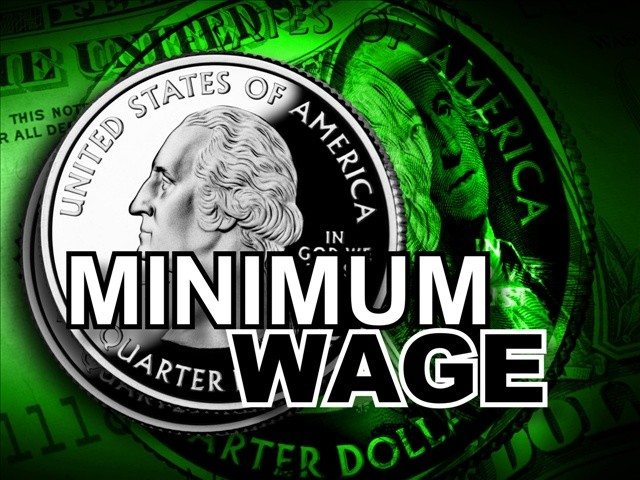
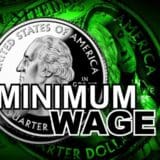
My friend pastors a vibrant congregation in the Mid-City area of Los Angeles. Her people reflect the neighborhood and the church worships in both Spanish and English. In a conversation this week I asked her how her folks were doing. Her voice dropped, and she shook her head. “There are no jobs,” she said, “and the ones who work can only get part-time hours.” With dismay, she said, “I don’t know how they are making it.”
I don’t either. At one extreme, high-end properties – homes that sell for several millions of dollars – had a banner year in 2012. Sales of super-expensive automobiles reached record levels. Exotic vacation destinations are packed. The number of jobs in Los Angeles County has reached about 4.3 million, almost the number we had before the Great Recession began five years ago, although there are now also more people looking for work than then.
» Read more about: Of Biblical Proportions: Inequality and Poverty Wages »


Most of us know how badly Walmart treats its employees. Yet whenever the remedy of paying a living wage is proposed, opponents always argue that the cost to Walmart shoppers is too high, and that low-income consumers will be hurt the most.[1]The question is: What will a living wage for Walmart workers cost Walmart shoppers?
First, some background. A 2005 study found that Walmart jobs in metropolitan areas pay less and are less likely to offer benefits. Other researchers demonstrated that Walmart workers earn on average 31 percent less than workers in large retail stores as a whole and about 60 percent of the wages of unionized workers. They also found that an astounding 75 percent of full-time workers with at least one year on the job made below $10 an hour and less than half were enrolled in Walmart’s cost-prohibitive health plan.
Moreover,
» Read more about: Walmart: The Low Cost of High Road Retailers »
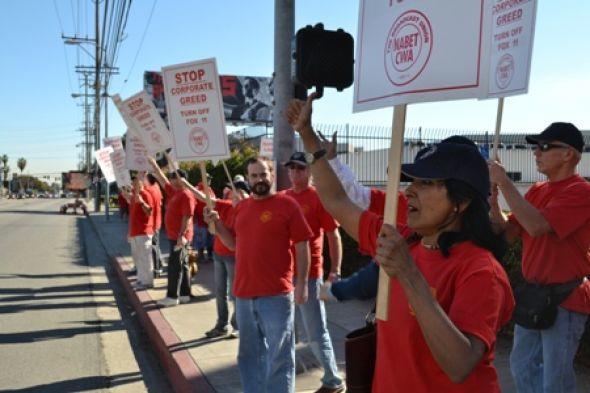
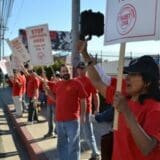
Since May of 2011, the producers, editors, photographers and other NABET-CWA* workers at KTTV and KCOP-TV in Los Angeles have been trying to negotiate a fair and reasonable contract with the owner of the stations, Fox Television – but the company has something else in mind.
Fox wants to end the standard 40-hour work week by putting NABET members on a seven-and-a-half-hour work day, and the management also wants to eliminate the paid meal period — which has been an industry standard for decades. Cutting back employees to a 37.5 hour work week effectively amounts to a 6.25 percent wage cut.
It doesn’t end there.
Fox also wants to cut vacation days, sick days, holidays and meal penalties. Premium pay for daily employees would be drastically reduced. Put it all together and many employees would see their wages and benefits reduced by 10 to 20 percent!
» Read more about: Fox: Gouge KTTV and KCOP Workers of Hours and Benefits »


Well… my 68 year old brain has done it again. It’s bad enough going into a room and wondering why you’re in there, but leaving your wallet on top of your car at the gas station, and then driving off, has much more serious consequences. It’s being pre-occupied with multi-tasking in this jet-set age that has overloaded the wiring upstairs. The New York Times had an article that creative acts need a singular focus; you can’t answer the phone, eat lunch, or text while playing music or painting. So I don’t know where my mind was after I set the billfold on the roof, pumped petrol, and left.
Certainly the miracle woman who was driving by later was in her present mind. That afternoon I was in a complete panic, going back to the gas station, looking everywhere, asking the attendant if anything had been turned in…


Two potential candidates for president in 2016, New Jersey Governor Chris Christie and New York Governor Andrew Cuomo, have taken opposing positions on raising the minimum wage in their states. The debate between the two governors draws a sharp distinction between competing economic visions: trickle-down vs. middle-out economics. At the same time, it also shows how limited the current debate is when it comes to dealing with what’s needed to meet the needs of working families and, in doing so, change the direction of economic policy.
In late January, New Jersey Governor Chris Christie vetoed a small increase in the minimum wage, from the current federal minimum of $7.25 an hour to $8.50 an hour. Christie said that raising the minimum wage would “jeopardize New Jersey’s economic progress.” Christie based his opposition on concerns about small business, although two out of three low-wage workers are employed by corporations with over 100 employees.


One of the most exciting and inspirational aspects of coalition building is seeing the success and victories that people get when they come together for the common good of their community. The time and effort that can go into the work is nothing compared to the feeling of victory once the campaign has been won, and the people and community feel the victory themselves.
Unfortunately, groups that have never worked together are often times unwilling to do so because of longstanding suspicions or differences, so building coalitions around economic enhancement projects, political campaigns, religious events and community change is a very hard thing to do. However if you apply some strategy rules to the process you can build a great coalition.
First, you have to believe in what you are trying to build together – and also believe that it can be built. You can’t waste time fighting a cause that is not winnable.
» Read more about: The Art of Coalitions: Building Teams of Rivals, Not Enemies »


More than 30,000 Los Angeles County homes still face foreclosure threats or have already been seized by banks as their owners struggle to cope with more than $14 billion in mortgage debt, a new analysis by Good Jobs LA reveals. These homes include:
The recent news reports about an “easing” foreclosure crisis bring no comfort to the more than 30,000 L.A. County families facing underwater mortgages held by the same banking giants that did so much to crash our economy nearly five years ago.
And the same big banks that led us into crisis continue to top the foreclosure lists,
» Read more about: Foreclosing Time: L.A. County’s Mortgage Crisis Continues »
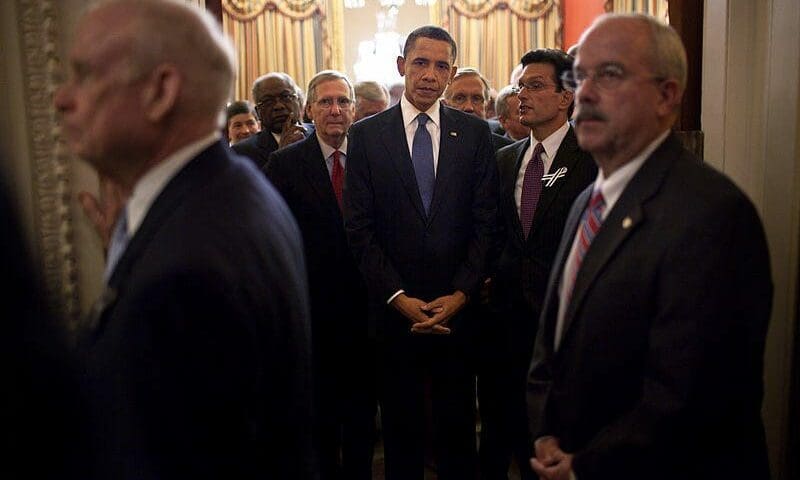
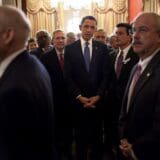
If you’re sitting in the well of the House when a president gives a State of the Union address (as I’ve had the privilege of doing five times), the hardest part is on the knees. You’re required to stand and applaud every applause line, which means, if you’re in the cabinet or an elected official of the president’s party, an extraordinary amount of standing and sitting.
But for a president himself, the State of the Union provides a unique opportunity to focus the entire nation’s attention on the central issue you want the nation to help you take action on.
President Obama has been focusing his (and therefore America’s) attention on immigration, guns, and the environment. All are important. But in my view none of these should be the central theme of his address Tuesday evening.
His focus should be on the joblessness, falling real wages, economic insecurity, and widening inequality that continue to dog the nation.


Several years ago, I spent time in a rural area of Ghana, a few miles outside the bustling city of Kumasi. As part of a public health research team, I was studying childhood diseases that come from lack of clean water. My goal was to understand how parents made decisions about how to treat their children’s water-related illnesses. Yet while treatment is critical, I was struck most by our relative powerlessness to prevent these diseases from happening in the first place.
More people die from unsafe water than from all forms of violence, including war, according to U.N. Secretary-General Ban Ki-moon. Across the globe from Ghana, here in the United States, we are fortunate to have some of the best public water systems in the world. In the U.S., public water has a long history of prompting economic development and advancing leaps in public health and safety.
Unfortunately our public water systems are under threat.


Postmaster General Patrick Donahoe’s plan to end Saturday mail delivery beginning August 5 is a “disastrous idea that would have a profoundly negative effect on the U.S. Postal Service (USPS) and on millions of customers,” says Letter Carriers (NALC) President Fredric Rolando.
Postal Workers (APWU) President Cliff Guffey says:
USPS executives cannot save the Postal Service by tearing it apart. These across-the-board cutbacks will weaken the nation’s mail system and put it on a path to privatization.
He adds that the USPS already has begun slashing mail service by closing 13,000 post offices or drastically reducing hours of operation, shutting hundreds of mail processing facilities and downgrading standards for mail delivery to America’s homes and businesses.
Rolando calls Donahoe’s strategy in dealing with the Postal Service’s financial challenges a “slash-and-shrink approach.”
Postal unions have tried to work with USPS management to develop costs savings and growth measures.
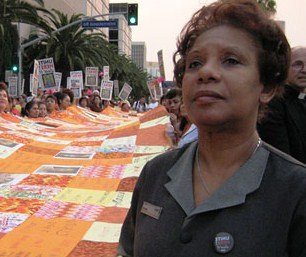

As I embark on a new chapter in my life as President and CEO of the Southern Christian Leadership Conference of Southern California, I’d like to reflect here upon some of the lessons I have learned while working at the Los Angeles Alliance for a New Economy for nearly 10 years. If we are going to help workers overcome the oppression they face on their jobs, and if we are going to work with communities to help them to become healthy and viable, then we have to have a dynamic plan and strategy that will lead to victory. Simply put in LAANE language, we must have a “strategy to win.”
For nearly 20 years LAANE has utilized this strategy to win to gain victories that have improved the lives of 350,000 people nationwide. It has engaged labor partners, environmental and community groups, and faith-based organizations, to score victories in and around Los Angeles.
» Read more about: The Calculus of Organizing: A Strategy To Win »
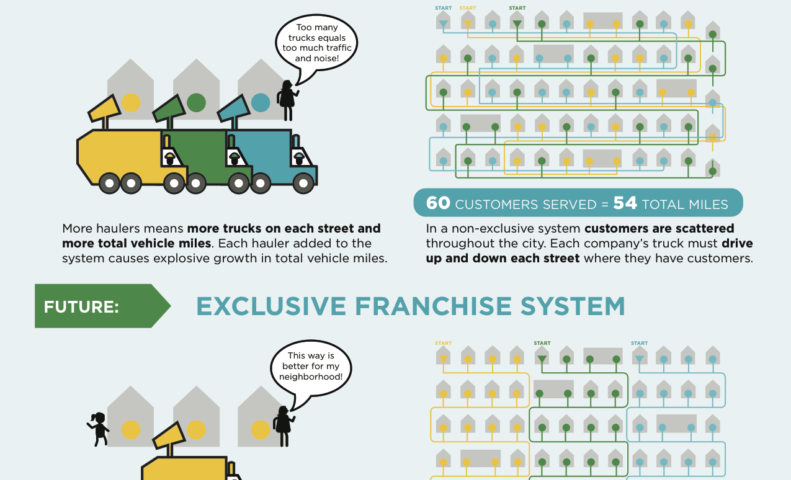
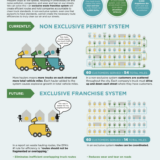
When I moved to East Hollywood a number of years ago, I asked a friend who lived next door if it was a quiet neighborhood. “No,” she said, “there’s a different trash truck every morning, sometimes more than one, sometimes at 6 a.m. If it weren’t for that, it would be quiet.”
Unfortunately, she was right. We would get stuck behind trucks on our way to work as they blocked our narrow neighborhood street. Our block was lucky enough to get repaved roads — but they were immediately destroyed by the heavy trash trucks, which carved deep ruts into the new finish and leaked trash juice into the setting asphalt.
A few years later, I started working in the Northeast San Fernando Valley, a low-income community of color where many of the city’s industries and pollution sources are concentrated. In Pacoima, I observed how the 10 or so trash trucks we’d seen each week in East Hollywood,
» Read more about: How L.A.’s Waste System Trashes Our Streets & Our Health »


(Editor’s Note: Today we continue our series of posts from invited writers who offer thoughts on what the coming four years hold for Los Angeles and its next mayor. These opinions do not reflect the views of Frying Pan News or the Los Angeles Alliance for a New Economy.)
Before Antonio Villaraigosa won his first term as mayor, he came over to my house to film a commercial. This took place by the merest chance. My neighbor across the street is a union organizer, a fellow progressive and a respected figure in local Democratic circles — he might have had something to do with Villaraigosa’s sudden appearance in our neighborhood. A whole bunch of staffers fanned out up and down our street that morning, knocking on every door to ascertain where they might mingle with hoi polloi and gather up a few sound bites.
» Read more about: Memo to Next Mayor: We’re All in This Together »
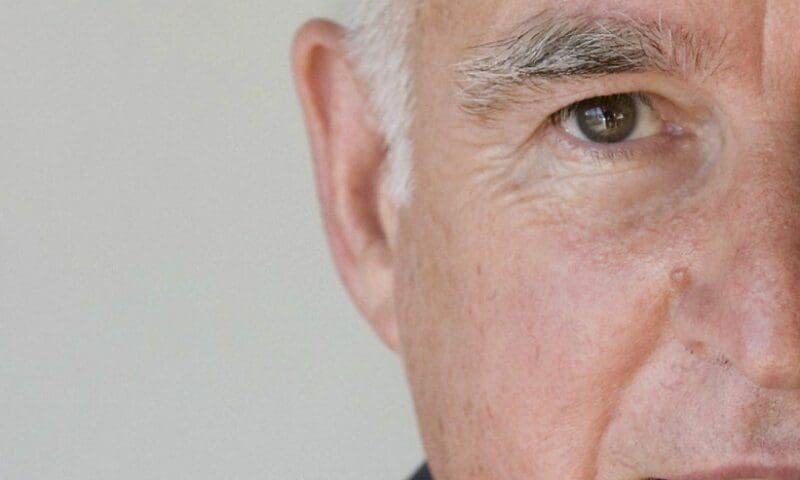
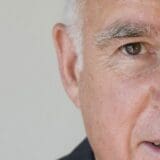
The walking, talking, governing refutation of the notion that there are no second acts in American lives is on a roll in California. “I’ve never been more excited,” Gov. Jerry Brown says, “and this is my 11th year on the job.”
Brown, 74, has ample reason for excitement. After a calamitous recession (inland California was the epicenter of the subprime quake) and nearly a decade of record deficits and legislative gridlock, Brown has come up with a budget that will put the Golden State into surplus territory without requiring further cuts. In November, voters approved Brown’s ballot measure, Proposition 30, which raised taxes on the wealthy and stabilized state finances to the point that Standard & Poor’s upgraded California’s credit rating last week. The new revenue has gone chiefly to schools and universities, though Brown wants to change K-12 funding so that money flows disproportionately to those districts with more impoverished and Spanish-speaking children.


In February 2005, Patti Phillips sat by her daughter’s bedside during the weeks before Stephanie Phillips died of bone cancer. Patti was able to be at her daughter’s side the day she died because of the federal law that allows millions of Americans to take family leave without risking their jobs. “You want to be there with your child…. and you don’t want to worry about your job,” said Phillips, 49, an inventory specialist at Coca-Cola in Atlanta. “The law gives you peace of mind.”
This week will mark 20 years since the Family and Medical Leave Act (FMLA) was signed into law by the newly inaugurated President Bill Clinton on February 5, 1993, after years of bitter opposition by the Chamber of Commerce and other business lobbies. Clinton said that it was time for employers to make basic commitments to American workers so that during those critical times when we must put our family’s health first,
» Read more about: The Family and Medical Leave Act and Its Enemies »


For years, women who clean rooms at Hyatt hotels have been speaking out against the injuries and hazards they face at work. In a recent press statement, Hyatt denied there is a problem, reducing citations and settlements to mere technicalities. Despite their protests, California state regulators disagree.
In a bold move last week, state regulators fired back at statements made by a Hyatt spokesperson that problems housekeepers face at the Hyatt Fisherman’s Wharf Hotel were “the equivalent of lagging paperwork.”
According to Amy Martin, the chief counsel of Cal/OSHA who called the San Francisco Bay Guardian disputing claims made by a Hyatt spokesperson:
“Cal/OSHA believes it found plenty of evidence both of injuries sustained by housekeepers, as well as violations of Cal/OSHA regulations.”
Comments traded by Hyatt and government officials last week came after a major settlement in a longstanding case [revolving] around housekeeper injuries at the Hyatt Fisherman’s Wharf Hotel.
» Read more about: Frisco Hyatt: “WHAT Injury-Wracked Housekeepers?” »


(Editor’s Note: Living in Los Angeles is a day-to-day experiment requiring patience and improvisational skills. So does governing this sprawling metropolis of 3.8 million people. The city’s next mayor, however, cannot be satisfied with merely coping with issues as they arise, but must be able to look forward and anticipate and define the city’s needs for the next four years. To this end we’ve asked writers to share their thoughts about what lies ahead – and around the corner – for Los Angeles.)
Going green may be all the rage. But get into the weeds and you may lose a few people. Take energy efficiency. Yes, it’ll save you money, create good jobs (if done right) and help us preserve the planet. But walk into a party and start talking about window caulking, attic insulation and compact fluorescent bulbs, and you may soon find yourself alone in a corner.
» Read more about: Beyond the Election: How Green Will Our City Be? »